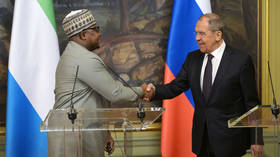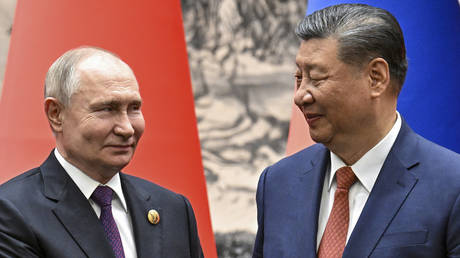Seeing the Big Picture: Russia-China Economic Cooperation, the SCO and Global Climate Change
by Martin Sieff, Strategic Culture:

This year’s Eastern Economic Forum in Vladivostok was as usual the subject of dismissive coverage – if any in the mainstream US and UK media. Viewed through the feverish and unregulated speculative bubbles that have defined what passes for 21st century global finance in New York and London, the slow but steady and enormous moves towards industrial and resource consolidation and cooperation between Beijing and Moscow are occurring at too slow a rate to grab Western imaginations shaped by Attention Deficit Disorders.
This failure to grasp the scale of what is going on is like Aesop’s Fable of the Tortoise and the Hare. Western leaders, strategists and financiers think in 24 hour news cycles and soundbites. Presidents Vladimir Putin of Russia and Xi Jinping of China are thinking in terms of decades and generations.
Western leaders and commentators believe Russian-Chinese economic cooperation has already failed and can never succeed be because it is moving slowly. They fail to grasp that it is moving consistently and steadily in the same direction.
What Russia and China are doing, as perceptive contributors to the Strategic Culture Foundation such as Federico Pieraccini have pointed out is to integrate the strategic security dimension of the highly successful and now well-established Shanghai Cooperation Organization (SCO) with the economic investment dimension of China’s Road and Belt Initiative.
A comparison could be with the much touted success of the combined Marshall Plan and NATO Alliance initiatives produced by the United States in the late 1940s to integrate all of Western Europe under US leadership and control.
However, the joint SCO and China-Russia economic cooperation initiatives are on a far vaster scale and do not demand the tight integration of the nations of the Eurasian Heartland in a lockstep, micromanaged structure. That is a major part of their appeal.
What the SCO has succeeded in doing over the past 17 years is to guarantee peace and security for all of its member states stretching across Eurasia. The contrast with the unending wars that the United States is waging – and has even provoked – across South Asia, the Middle East and North Africa – on the periphery of the Eurasian World Island, could not be more striking.
The SCO took another gigantic step towards maintaining peace across Asia this year when India and Pakistan both became members of the body at the same time. This move is going to have enormous and highly positive investment and economic ramifications as well as security ones.
Even Global Climate Change is now playing a rapidly growing role in propelling the enormous communications and industrial consolidation of the main nations of Eurasia.
For Climate Change is unlocking the resources of Siberia and the Arctic Basin in ways inconceivable even a decade ago. Moscow and Beijing are the obvious partners to develop the new opportunities on offer.
As I wrote in the “China Daily” on September 11, “To focus on economic development in Central Asia and Kazakhstan, as so many studies do, is to miss the point of the long-term focus, or schwerpunkt of specific Sino-Russian economic cooperation. That lies further east and far to the north, across Siberia and the Arctic and along the longest common borders in the world.”
I then noted that China has a growing appetite for Russian oil that is not subject to international price fluctuations and most of all, to disruptions by wars and destabilization generated by unpredictable US policies.
For Russia too, locking in expanded long term energy deals with Beijing would be a most welcome buffer against further wild fluctuations in global energy prices though it looks increasing likely that instability in the global oil prices will be fostered by the two nations most likely to suffer disastrously from it – the United States and Saudi Arabia.
The enormous distances, lack of existing infrastructure and harsh climatic conditions across norther eastern Eurasia for much of the year have always been the main factors militating against more rapid economic development between Russia and China. Nevertheless, bilateral trade has steadily and substantially risen from a relatively paltry $15.8 billion in 2003 to $95.3 billion in 2014.
This was still vastly less than China’s $500 billion per year total trade volume with the European Union in 2014. But an increasingly unstable EU – once again as a result of reckless US and UK policies – is likely to require considerably less imports from China in the next few years.
By contrast, Russia has pursued a cautious and responsible fiscal policy through this century under President Putin and it is now seeking to expand and diversify its own manufacturing and industrial base. As a result, the Russian market looks likely to generate unexpectedly high positive elasticity of demand for Chinese companies and investment in the coming decade.
Read More @ Strategic-Culture.org
Loading...



